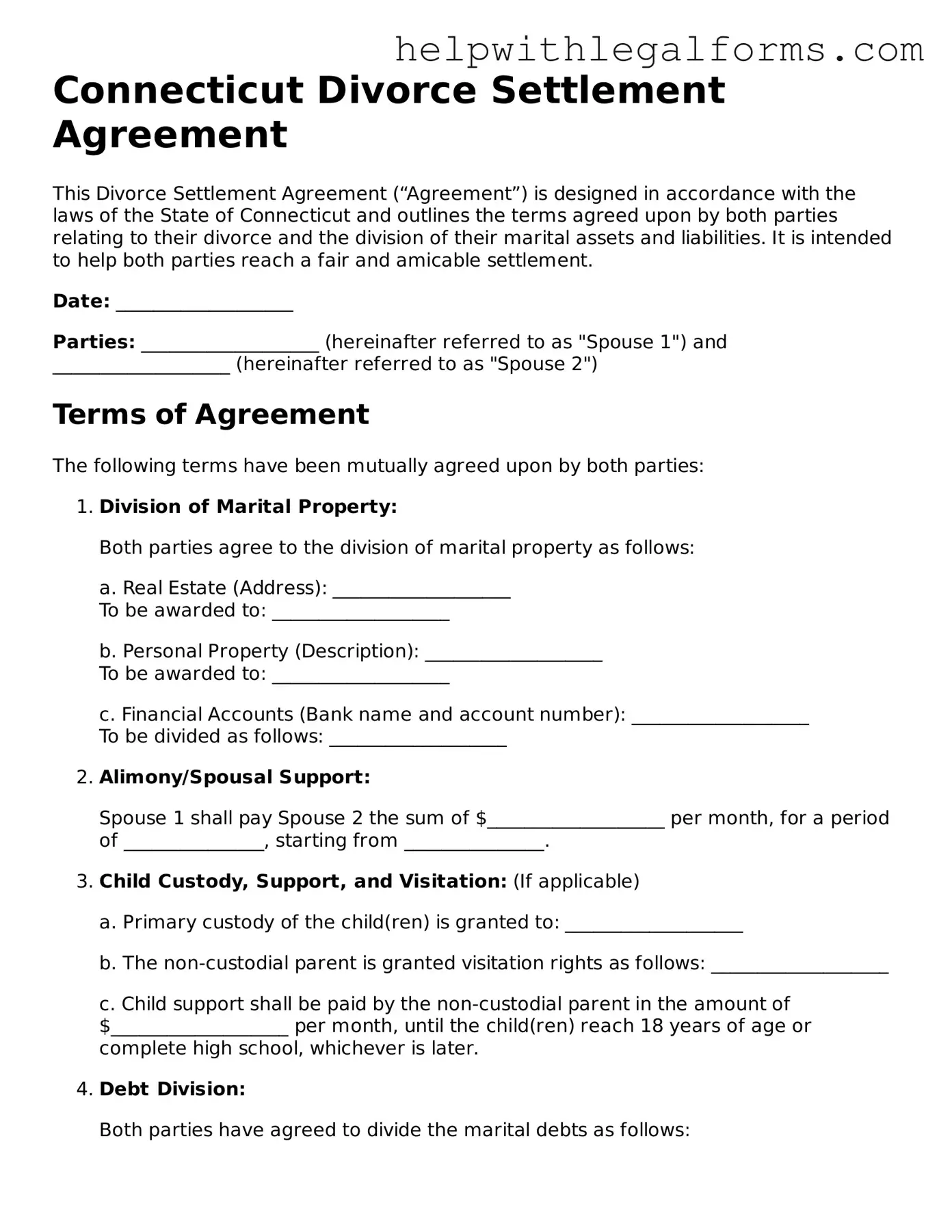What is a Divorce Settlement Agreement in Connecticut?
A Divorce Settlement Agreement in Connecticut is a legal document that outlines how a divorcing couple has decided to divide their assets, debts, and other responsibilities. This can include everything from property and financial assets to child custody and support arrangements. It's a crucial step in the divorce process, as it helps ensure that both parties have a clear understanding of their rights and obligations post-divorce.
How can I file a Divorce Settlement Agreement in Connecticut?
Filing a Divorce Settlement Agreement in Connecticut involves a few steps. First, both parties must agree on the terms of the settlement. Once the agreement is drafted and signed by both parties, it must be submitted to the court for approval during the divorce proceedings. It’s recommended to seek legal advice to ensure the document is prepared correctly and reflects the agreement accurately.
Do I need a lawyer to create a Divorce Settlement Agreement in Connecticut?
While it's not strictly required to have a lawyer to create a Divorce Settlement Agreement in Connecticut, consulting with one is highly recommended. A lawyer can provide valuable insight into your rights and obligations, help negotiate fair terms, and ensure that the agreement complies with Connecticut law. They can also represent you in court, should disputes arise during the divorce process.
What should be included in a Divorce Settlement Agreement?
A comprehensive Divorce Settlement Agreement should include detailed arrangements regarding asset division, debt responsibility, alimony (if applicable), child support, custody arrangements, and visitation schedules. It may also cover insurance policies, tax considerations, and any other relevant matters. Each section should clearly outline the responsibilities of each party to prevent misunderstandings in the future.
Can a Divorce Settlement Agreement be changed after it is finalized in Connecticut?
Yes, a Divorce Settlement Agreement can be modified after it is finalized, but only under certain conditions. If both parties agree to the changes, they can jointly file a petition with the court to amend the agreement. If one party seeks changes that the other opposes, the petitioner must demonstrate to the court that a significant change in circumstances justifies the requested modification. The court will then decide whether to approve the changes.
What happens if one party violates the Divorce Settlement Agreement?
If one party violates the Divorce Settlement Agreement, the other party can file a motion with the court to enforce the agreement. The court may order various remedies, such as compelling compliance, financial penalties, or altering the terms of the agreement to address the violation. In cases where one party consistently fails to comply, more severe consequences can occur, underscoring the importance of adhering to the terms set forth in the agreement.
